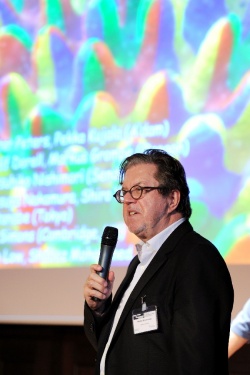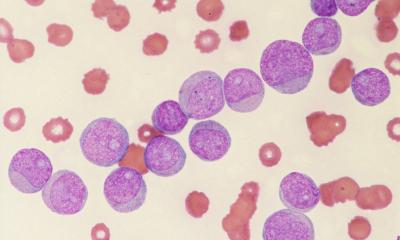Seeking the best pluripotent stem cell
Susanne Werner reports on the views and revelations of international researchers gathered to deliberate the future potential of reprogrammed human adult stem cells and personalised medical treatments


Professor Walter Birchmeier, head of a research group at the Max-Delbrück-Centre for Molecular Medicine (MDC), underlined the large potential of stem cells: ‘Harvested from adult body cells they have distinct advantages for research into diseases, and possibly one day also for individualised therapy.’ However, warned Professor Rudolf Jänisch, of the Whitehead Institute in Cambridge (USA), ‘A lot more time will pass before they can be safely used than is currently often stated.’
Adult stem cells can be differentiated into certain cell types
The first bone marrow transplant was carried out around 40 years ago and stem cell therapy, in which the patient’s blood stem cells are exchanged for those from a healthy donor, has shown particular potential in leukaemia treatment. Researchers and doctors have fine-tuned this procedure and increased the survival rate for leukaemia significantly. Researchers are currently looking for the optimal stem cell that can be reintroduced
into the organism without rejection. The key is the reprogramming of body cells, i.e. somatic cells, into socalled induced, pluripotent stem cells, the so-called iPS cells. These are harvested from adult somatic cells – e.g. from the skin – and can then be differentiated into certain cell types, such as nerve or cardiac cells, so their application in many medical areas is conceivable.
One of the best-known conference participants was molecular biologist and geneticist Professor Rudolf Jänisch, a pioneer of transgenic research and developer of the mouse model on the basis of which many diseases have now been researched. His current adult stem cells research, carried out at the Whitehead Institute, part of the Institute of Technology (MIT) in Massachusetts, USA, sounds as exciting as it seems promising. The central point is that scientists use the body’s own genetic materials, but also mechanisms and processes to kick-start an individual healing process. ‘Therapy with adult stem cells is in contrast to conventional transplant medicine,’ he said. Speaking of a possible way of treating toxic liver disease, he said: ‘We are already able to harvest skin cells. They would then have to be differentiated to liver cells and reintroduced into the body as iPS cells via the portal vein. The interaction of cells, the genome and the environment, such as lifestyle or diet.’ ‘We are at the beginning of a comprehensive understanding of the biology of stem cells,’ added molecular biologist Prof. Birchmeier, whose cancer research team is currently working on basic questions about human stem cells and cancer cells as well as on model systems with fruit flies, flatworms, fish and mice. The basic prerequisite for successful application is that the disease actually allows the transplantation of cells. Therefore, the most promising areas are research into diseases of the liver, blood and diabetes. ‘Diseases such as Alzheimer’s are probably very difficult for this type of treatment. It is improbable that countless nerve cells should be replaceable,’ he said.
Change helped by a single gene
iPS cells still present many problems and questions. ‘We are currently looking for transcription factors that increase the rate of successful reprogramming. This is currently still a chance process. We want to use it to find the best possible stem cells,’ Prof. Jänisch said. Only very few donated somatic cells can be changed into iPS cells and become pluripotent, he added. Professor Hans Schöler and his team at the Max-Planck-Institute (MPI) for Molecular Biomedicine in Muenster were the first to succeed in changing adult human cells into pluripotent iPS cells with the help of a singular gene, the Oct4. ‘Among other issues, this lowers the dangers of transferring precancerous cells for any later potential therapeutic applications,’ explained Prof. Schöler, whose institute is conducting research into cardiovascular diseases, neural problems and selected cancerous diseases.
Finally, Prof. Birchmeier expressed everyone’s fascination by the issues around the nature of stem cells, as well as the extraordinary potential they may have for regenerative therapies.
20.12.2011











